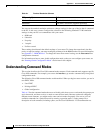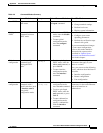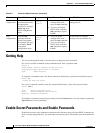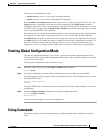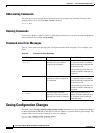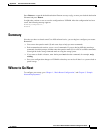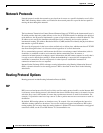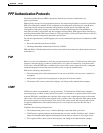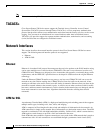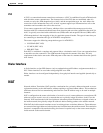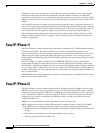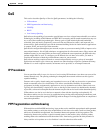
B-2
Cisco Secure Router 520 Series Software Configuration Guide
OL-14210-01
Appendix B Concepts
Network Protocols
Network Protocols
Network protocols enable the network to pass data from its source to a specific destination over LAN or
WAN links. Routing address tables are included in the network protocols to provide the best path for
moving the data through the network.
IP
The best-known Transmission Control Protocol/Internet Protocol (TCP/IP) at the internetwork layer is
IP, which provides the basic packet delivery service for all TCP/IP networks. In addition to the physical
node addresses, the IP protocol implements a system of logical host addresses called IP addresses. The
IP addresses are used by the internetwork and higher layers to identify devices and to perform
internetwork routing. The Address Resolution Protocol (ARP) enables IP to identify the physical address
that matches a given IP address.
IP is used by all protocols in the layers above and below it to deliver data, which means that all TCP/IP
data flows through IP when it is sent and received regardless of its final destination.
IP is a connectionless protocol, which means that IP does not exchange control information (called a
handshake) to establish an end-to-end connection before transmitting data. In contrast, a
connection-oriented protocol exchanges control information with the remote computer to verify that it
is ready to receive data before sending it. When the handshaking is successful, the computers have
established a connection. IP relies on protocols in other layers to establish the connection if
connection-oriented services are required.
Internet Packet Exchange (IPX) exchanges routing information using Routing Information Protocol
(RIP), a dynamic distance-vector routing protocol. RIP is described in more detail in the following
subsections.
Routing Protocol Options
Routing protocols include Routing Information Protocol (RIP).
RIP
RIP is an associated protocol for IP, and is widely used for routing protocol traffic over the Internet. RIP
is a distance-vector routing protocol, which means that it uses distance (hop count) as its metric for route
selection. Hop count is the number of routers that a packet must traverse to reach its destination. For
example, if a particular route has a hop count of 2, then a packet must traverse two routers to reach its
destination.
By default, RIP routing updates are broadcast every 30 seconds. You can reconfigure the interval at
which the routing updates are broadcast. You can also configure triggered extensions to RIP so that
routing updates are sent only when the routing database is updated. For more information on triggered
extensions to RIP, see the Cisco
IOS Release 12.3 documentation set.



